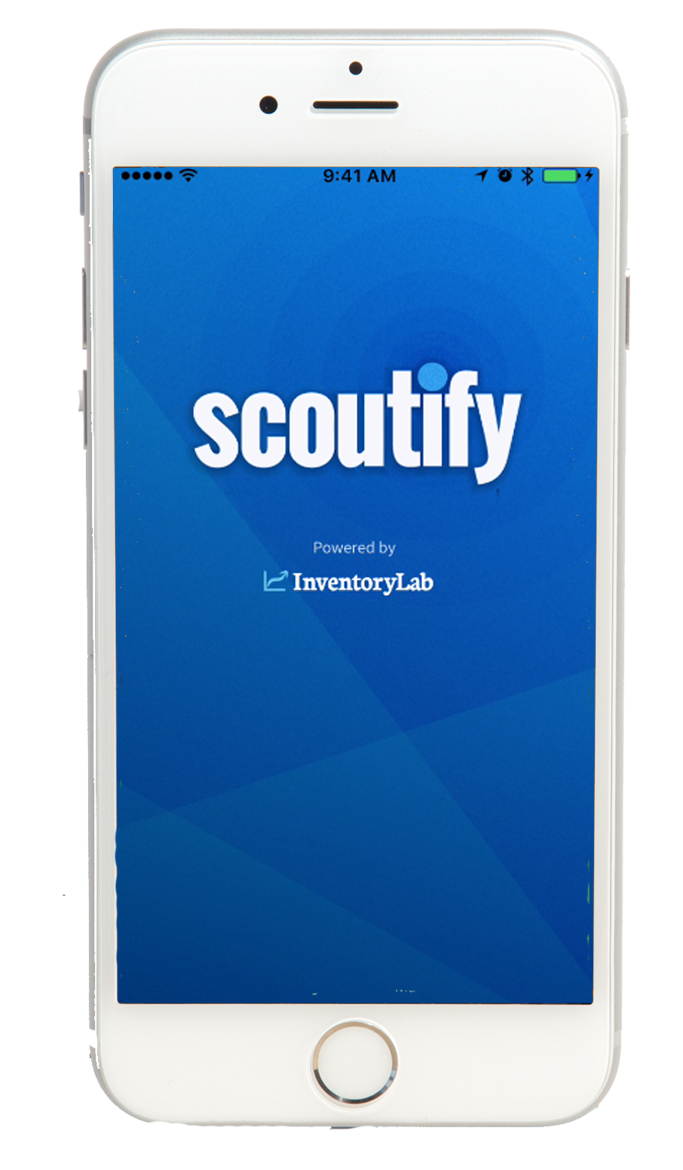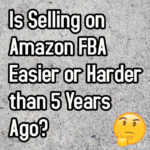Things sometimes seem to change in the Amazon world faster than we as sellers can keep up. Long-term storage fees are changing this year, the Amazon guidelines are updated from time to time, and sales rank changes multiple times throughout the day! It’s hard at times to know whether Amazon is getting easier for us sellers…or harder.
A while back we posted a blog post about overcoming your fear of starting an FBA business, which led some readers – and myself – to ask the question: Is selling on Amazon FBA easier or harder than 5 years ago?
If you know me, you aren’t surprised to hear my answer. Is selling on Amazon easier or harder now than it was before?
Yes.
 This is definitely not an either-or question. I can think of ways selling on Amazon is both harder and easier now than it was in years past. But I have an abundance mindset, so I’m going to focus the majority of this blog post on how selling is easier now – because focusing on the negative isn’t going to get me very far in my business.
This is definitely not an either-or question. I can think of ways selling on Amazon is both harder and easier now than it was in years past. But I have an abundance mindset, so I’m going to focus the majority of this blog post on how selling is easier now – because focusing on the negative isn’t going to get me very far in my business.
Some aspects of selling on Amazon are more difficult today than they were a few years ago. Today there are
- more brands that are restricted,
- more categories gated and requiring approval,
- more FBA sellers to compete with,
- higher fees during Q4,
- shorter times to sell inventory before long-term storage fees apply,
- and the list can go on if we keep focusing on these negatives.
I’ve actually dealt with some of these topics in past blog posts, so I don’t want to go into more detail in this article. Here are some links if you want to check out previous posts:
Amazon FBA Changes – Retail Arbitrage Receipts & Brand Restrictions
Overcoming Your Fear of Branching out into New Categories
Is There Still Room for New Amazon FBA Sellers?
Even with all of these difficulties in mind, I strongly feel that so many more aspects of selling on Amazon are easier now than they were several years ago. Let’s take a look at a few:
 * Multiple sourcing apps
* Multiple sourcing apps
You may or may not be aware that at one point sellers were buying inventory to sell on Amazon without the benefit of sourcing apps. In the early days, sellers would go to a retail store with a note pad to write down UPCs and other details about products, go home to do online research, and then come back to the store to make their purchases (if the inventory was still on the shelf). Now we have multiple options for different sourcing apps that can provide all of the necessary data for us to make split second decisions about inventory right there in the store aisle. (I recommend the Scoutify app and can’t imagine running an Amazon business without it.)
 * Easy access to price history and sales rank history
* Easy access to price history and sales rank history
Once upon a time sellers (and buyers) did not have access to sites like Keepa for checking out the price history and sales rank history of an item before making a decision. Now we not only have access to those websites, but we also have quick links to them within sourcing apps – or Chrome extensions if we’re doing online arbitrage. We can make much smarter sourcing decisions now than in years past, meaning we can count on our inventory selling faster and for higher prices than was possible in the past.
 * Products and services for online arbitrage
* Products and services for online arbitrage
Before Chris Green wrote his book Online Arbitrage, folks doing online sourcing had little help from products or services to make the tedious work of finding online deals easier. Today we have programs like Tactical Arbitrage to drastically reduce the amount of time it takes to sort through the deals on a website and compare them to the Amazon catalog. We have extensions like How Many? that quickly reveal a competitor’s stock levels and compare info on variations of a parent ASIN. There are deal lists you can subscribe to for daily or weekly leads on potential sourcing opportunities. Prep centers have sprung up all across the US to help sellers prep, pack, and ship their inventory – without ever having to touch it personally. Online sourcing is truly much easier than it was in years past, giving more sellers (including myself) the opportunity to build a profitable business from the comfort of home.
 * Abundance of free information about selling on Amazon
* Abundance of free information about selling on Amazon
Compared to years past, the amount of information available on Facebook, YouTube, and blogs (like the one you’re reading now) is almost overwhelming. You can find a Facebook group dedicated to just about any niche you can think of in the Amazon FBA world, where you can search the archives or post questions for the community. If you’re not already a member of the Full-Time FBA Facebook group, you can join here. In addition to these types of free resources, Amazon Seller Central is at least a billion times better than in the early years. No exaggeration. A billion. Contrary to popular opinion, Amazon wants their third-party sellers to thrive, and they have sought to build up a ton of free resources on Seller Central to help you know better how to sell via FBA.
So much of what we had to learn about selling via FBA in the early years came from trial and error, but the learning curve is much less steep today. Yes, there are difficulties that have come up over the years, but overall it’s a lot easier to start selling on Amazon today – and to build up a profitable, full-time FBA business.
Your business depends on how you handle your mindset on this issue and so many others. I’m not saying you should deny the negatives, but focusing on the positives and continuing to work towards progress is a much more profitable use of your time and resources.
Which perspective do you have? An abundance mindset that things are better now than they were in the past? Or a scarcity mindset that the good old days of Amazon FBA are over? I’d love to hear your thoughts in the comments below.
![]()
 One of the ways you can make selling on Amazon FBA easier is to know ahead of time exactly what to expect each and every month of the year. Imagine what it would feel like knowing you were not missing out on any of the opportunities that will come your way this year. Imagine working on your Amazon business knowing exactly what your priorities are, what you need to avoid, and what you need to accomplish during each month to make progress toward making this year your best sales year ever. Now you can with the course The Reseller’s Guide to a Year in FBA: A Month by Month Guide to a Profitable Amazon Business. The package includes a 220+ page ebook, training videos throughout the year, and 4 special bonuses.
One of the ways you can make selling on Amazon FBA easier is to know ahead of time exactly what to expect each and every month of the year. Imagine what it would feel like knowing you were not missing out on any of the opportunities that will come your way this year. Imagine working on your Amazon business knowing exactly what your priorities are, what you need to avoid, and what you need to accomplish during each month to make progress toward making this year your best sales year ever. Now you can with the course The Reseller’s Guide to a Year in FBA: A Month by Month Guide to a Profitable Amazon Business. The package includes a 220+ page ebook, training videos throughout the year, and 4 special bonuses.

What’s the best way to get in touch with manufacturers, wholesalers, and distributors to find branded products for resale on Amazon FBA.
Here are the ways I do it: https://www.fulltimefba.com/find-profitable-wholesale-accounts-amazon-fba/
Great article Stephen! Mindset is key! My favorite improvement: boxes with mixed skus go to 1 fulfillment center more often! Yay!
I’m going for abundance b/c I just started, and my family needs this to work. Others are doing it. With the right attitude and a lot of hard work, it should work for me too!
I’ve been selling on Amazon since 2001, and it is definitely DIFFERENT. The issues and problems are different, and the consequences of failure to follow the rules are more severe, but I still believe with the proper business model, attention to detail, and hard work you can still be hugely successful on Amazon.
Amazon is not a get-rich-quick program, there are no guarantees, and you will experience setbacks and daily annoyances, but for those willing to do the work, listen and learn, it can be great.
Plenty of room out there, just have to dig and learn how to look to find your spot.